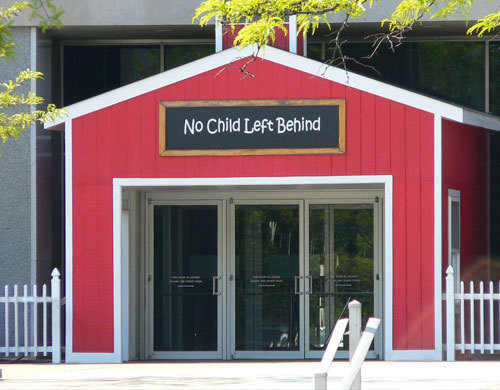Whenever I talk or write about the new evidence standards in the Every Student Succeeds Act (ESSA), someone is bound to ask how this is different from No Child Left Behind (NCLB). Didn't NCLB also emphasize using programs and practices "based on scientifically-based research?"
Though they look similar on the surface, evidence in ESSA is very different from evidence in NCLB. In NCLB, "scientifically-based research" just meant that a given program or practice was generally consistent with principles that had been established in research, and almost any program can be said to be "based on" research. In contrast, ESSA standards encourage the use of specific programs and practices that have themselves been evaluated. ESSA defines strong, moderate, and promising levels of evidence for programs and practices with at least one significantly positive outcome in a randomized, matched, or correlational study, respectively. NCLB had nothing of the sort.
To illustrate the difference, consider a medical example. In a recent blog, I told the story of how medical researchers had long believed that stress caused ulcers. Had NCLB's evidence provision applied to ulcer treatment, all medicines and therapies based on reducing or managing stress, from yoga to tranquilizers, might be considered "based on scientifically based research" and therefore encouraged. Yet none of these stress-reduction treatments were actually proven to work; they were just consistent with current understandings about the origin of ulcers, which were wrong (bacteria, not stress, causes ulcers).
If ESSA were applied to ulcer treatment, it would demand evidence that a particular medicine or therapy actually improved or eliminated ulcers. ESSA evidence standards wouldn't care whether a treatment was based on stress theory or bacteria theory, as long as there was good evidence that the actual treatment itself worked in practice, as demonstrated in high-quality research.
Getting back to education, NCLB's "scientifically-based research" was particularly intended to promote the use of systematic phonics in beginning reading. There was plenty of evidence summarized by the National Reading Panel that a phonetic approach is a good idea, but most of that research was from controlled lab studies, small-scale experiments, and correlations. What the National Reading Panel definitely did not say was that any particular approach to phonics teaching was effective, only that phonics was a generically good idea.
One problem with NCLB's "scientifically-based research" standard was that a lot of things go into making a program effective. One phonics program might provide excellent materials, extensive professional development, in-class coaching to help teachers use phonetic strategies, effective motivation strategies to get kids excited about phonics, effective grouping strategies to ensure that instruction is tailored to students' needs, and regular assessments to keep track of students' progress in reading. Another, equally phonetic program might teach phonics to students on a one-to-one basis. A third phonics program might consist of a textbook that comes with a free half-day training before school opens.
According to NCLB, all three of these approaches are equally "based on scientifically-based research." But anyone can see that the first two, lots of PD and one-to-one tutoring, are way more likely to work. ESSA evidence standards insist that the actual approaches to be disseminated to schools be tested in comparison to control groups, not assumed to work because they correspond with accepted theory or basic research.
"Scientifically-based research" in NCLB was a major advance in its time, because it was the first time evidence had been mentioned so prominently in the main federal education law, yet educators soon learned that just about anything could be justified as "based on scientifically-based research," because there are bound to be a few articles out there supporting any educational idea. Fortunately, enthusiasm about "scientifically-based" led to the creation of the Institute of Education Sciences (IES) and, later, to Investing in Innovation (i3), which set to work funding and encouraging development and rigorous evaluations of specific, replicable programs. The good work of IES and i3 paved the way for the ESSA evidence standards, because now there are a lot more rigorously evaluated programs. NCLB never could have specified ESSA-like evidence standards because there would have been too few qualifying programs. But now there are many more.
Sooner or later, policy and practice in education will follow medicine, agriculture, technology, and other fields in relying on solid evidence to the maximum degree possible. "Scientifically-based research" in NCLB was a first tentative step in that direction, and the stronger ESSA standards are another. If development and research continue or accelerate, successive education laws will have stronger and stronger encouragement and assistance to help schools and districts select and implement proven programs. Our kids will be the winners.
This blog is sponsored by the Laura and John Arnold Foundation

